Acne Scarring Treatments
Combat acne scarring and rediscover clear and flawless skin.
- This page has been written by Mila

Acne Scarring Treatments at SKIN
Are acne scars affecting your skin’s texture and your self-confidence? At SKIN, we offer specialized treatments to address and reduce the appearance of acne scarring, helping you achieve a smoother, more even complexion.
Our experienced skin therapists are skilled in the latest techniques for acne scar reduction, providing compassionate and effective care. Whether your scarring is recent or longstanding, we’re here to assist you on your journey to clearer, rejuvenated skin.
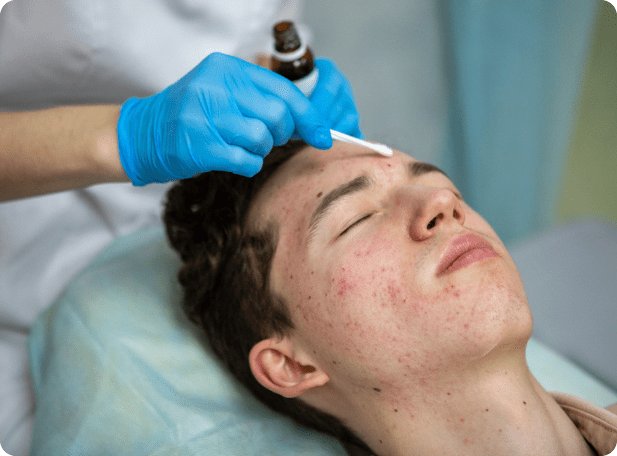
Get in touch

Why Book with us
Tailored Acne Scar Treatment Plans
Customized to your specific skin type and scarring concerns.
Proven Expertise
Successfully treating a variety of acne scars in numerous clients.
Complimentary, No-Obligation Consultation
Begin your path to smoother skin with a free initial consultation.
Two Convenient Amsterdam Locations
Accessible, professional care throughout the city.
Health Insurance Partnerships
Potential collaborations to help manage your treatment costs.
What We Treat
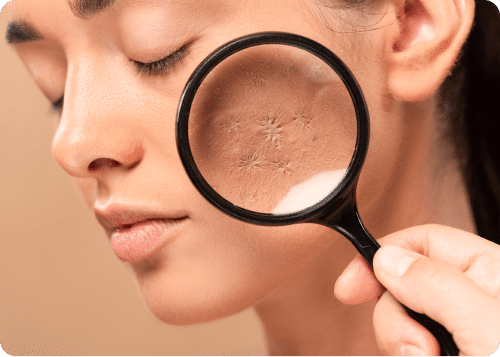
Various Types of Acne Scars

Skin Texture Improvement
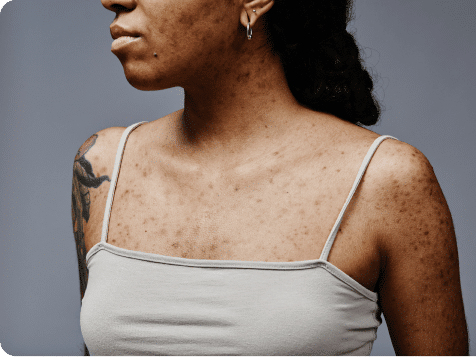
Pigmentation Issues
Clear Skin
Facial Treatments
Efective Skincare
Senior Therapists
Latest Technologies
- Quote from SKIN therapist
“Treating acne scars is about more than improving your skin’s appearance; it’s about restoring your skin’s health and your confidence.
We use a combination of advanced treatments to not only reduce the visibility of scars but also to promote the health and resilience of your skin.”







How Do We Treat Acne Scarring?
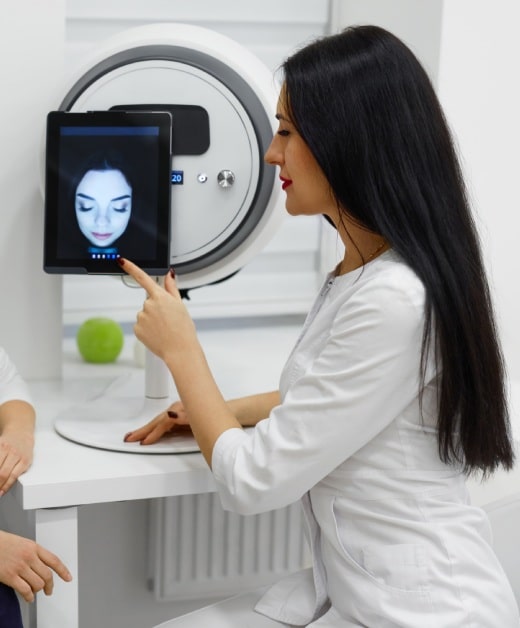
What to Expect During Your Acne Scarring Treatment Journey
STEP ONE
Initial Consultation:
At your first visit, we gather essential personal information to understand your acne concerns, treatment goals, and expectations. This is a vital step in tailoring our approach to your specific needs.
STEP TWO
Comprehensive History Review:
During the consultation, we delve into your medical and skin history. A detailed questionnaire, covering topics such as allergies, medication usage, and other health factors, will be conducted by our skin specialist. This information is crucial to ensure your skin’s safety and the effectiveness of the chosen treatment.
STEP TREE
In-Depth Skin Analysis:
Utilizing advanced skin analysis technology, we assess the condition of your skin. This device captures and analyzes images under various filters, providing a detailed view of both the superficial and deeper layers of your skin. This analysis is key in pinpointing specific issues and determining the most effective treatment approach.
STEP FOUR
Personalized Treatment Plan:
Based on the consultation and skin analysis findings, our skin specialist will create a personalized treatment plan or routine, tailored to address your unique skin concerns and goals.
STEP FIVE
Treatment Session:
If you choose to have a treatment immediately following the consultation, we allocate additional time for this. The commencement of your treatment plan can begin without delay. Please note, the cost may vary depending on the specific treatment selected.

Hear From Our Happy Clients
 Tipo Ta2023-12-11Vriendelijk en professioneel personeel.
Tipo Ta2023-12-11Vriendelijk en professioneel personeel. Hassan Meftah2023-11-08Leuk professioneel personeel. Als zeer prettig ervaren.
Hassan Meftah2023-11-08Leuk professioneel personeel. Als zeer prettig ervaren. Sarah Bo2023-10-18
Sarah Bo2023-10-18 Gloria van Breukelen2023-09-15
Gloria van Breukelen2023-09-15 Tim Craig2023-09-15As a 49 year old man with no more experience of facial care than smothering myself with "Nivea for Men" I was driven to the world of face care by a very dry, flakey face. So with some trepidation I was booked for a facial with Nancy at SKIN. It was a absolutely fantastic experience - Nancy explained everything that was going on very clearly and steamed, smeared, wiped, squeezed and blasted by face with powerful red light. I've now got a routine to care for my face and no more excessive dryness. Will be back for sure!
Tim Craig2023-09-15As a 49 year old man with no more experience of facial care than smothering myself with "Nivea for Men" I was driven to the world of face care by a very dry, flakey face. So with some trepidation I was booked for a facial with Nancy at SKIN. It was a absolutely fantastic experience - Nancy explained everything that was going on very clearly and steamed, smeared, wiped, squeezed and blasted by face with powerful red light. I've now got a routine to care for my face and no more excessive dryness. Will be back for sure! Gulsum2023-07-31Een Advanced Skin Facial treatment bij Winke gehad. Ik werd er fijn ontvangen met een korte intro, omdat ik momenteel zwanger ben werden er een aantal dingen van de lijst geschrapt. Hiervoor in de plaats een infrarood therapie gehad, kortom veel aandacht en liefde voor klanten. De fijne producten en uitleg bij elke stap zorgden voor een aangenaam gevoel. Ik ben blij en kom hier zeker weer langs!
Gulsum2023-07-31Een Advanced Skin Facial treatment bij Winke gehad. Ik werd er fijn ontvangen met een korte intro, omdat ik momenteel zwanger ben werden er een aantal dingen van de lijst geschrapt. Hiervoor in de plaats een infrarood therapie gehad, kortom veel aandacht en liefde voor klanten. De fijne producten en uitleg bij elke stap zorgden voor een aangenaam gevoel. Ik ben blij en kom hier zeker weer langs! Jakob Coenen2023-07-14Erg schoon
Jakob Coenen2023-07-14Erg schoon Samantha R2023-07-11I don’t often write reviews, but this one deserves attention! After 4 years of struggling with skin issues, i was referred by a friend to Dr Zabaleta and she was adamant that he had made her skin “ridiculously beautiful”! After just 2 treatments I saw some significant improvement. Dr Armando customizes the treatment to the skin type and even considers the impact and reaction of well known products on my tanned, ultra sensitive skin which required a much more delicate approach and with basic products. Previously, I’ve had spent €€€€ on products and treatments over the last 4 years - that were actually causing more damage to my skin, until I discovered Dr Zabaleta and his team. In my intake, he considered medical & lifestyle topics which also helped to spotlight- the true underlying cause of the skin issue. I didn’t feel oversold as the products reccomended are easily accessible and don’t cost a fortunate and he never imposes any of it! He is very direct to even tell you when you don’t need a treatment! 😅 All in all - great customer service and support. A very happy client here and would totally recommend! 6 stars for me! Thank you Team!Google rating score: 4.8 of 5, based on 159 reviews
Samantha R2023-07-11I don’t often write reviews, but this one deserves attention! After 4 years of struggling with skin issues, i was referred by a friend to Dr Zabaleta and she was adamant that he had made her skin “ridiculously beautiful”! After just 2 treatments I saw some significant improvement. Dr Armando customizes the treatment to the skin type and even considers the impact and reaction of well known products on my tanned, ultra sensitive skin which required a much more delicate approach and with basic products. Previously, I’ve had spent €€€€ on products and treatments over the last 4 years - that were actually causing more damage to my skin, until I discovered Dr Zabaleta and his team. In my intake, he considered medical & lifestyle topics which also helped to spotlight- the true underlying cause of the skin issue. I didn’t feel oversold as the products reccomended are easily accessible and don’t cost a fortunate and he never imposes any of it! He is very direct to even tell you when you don’t need a treatment! 😅 All in all - great customer service and support. A very happy client here and would totally recommend! 6 stars for me! Thank you Team!Google rating score: 4.8 of 5, based on 159 reviews
Before & After
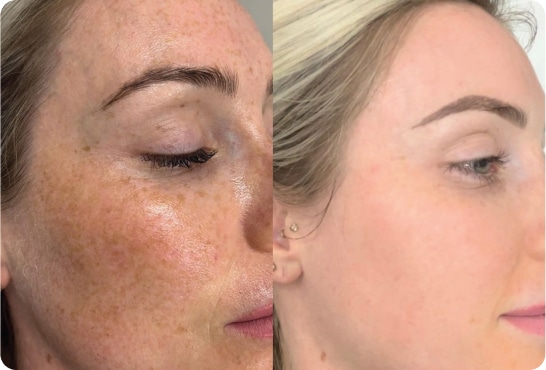
Skin Concern: Pigmentation
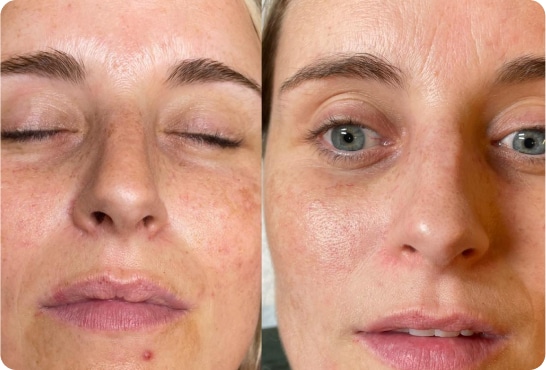
Skin Concern: Pigmentation
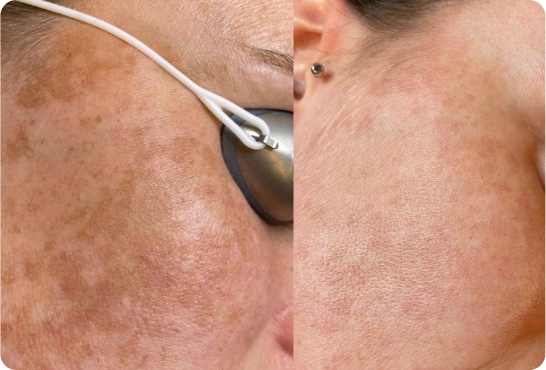
Skin Concern: Pigmentation
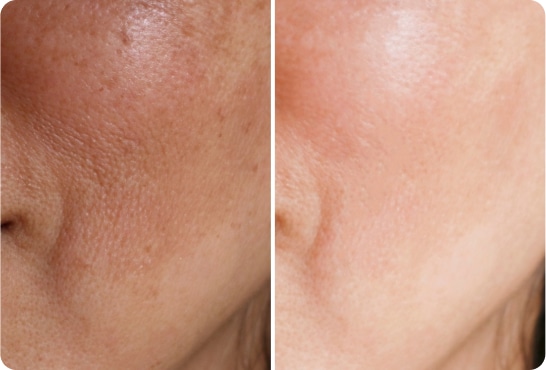
Skin Concern: Pigmentation
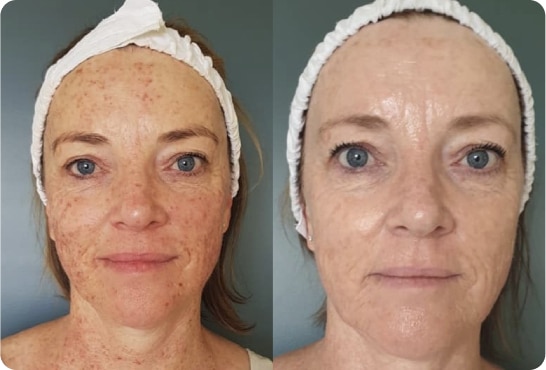
Skin Concern: Pigmentation
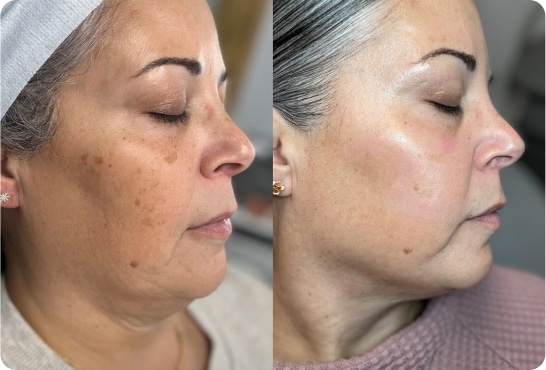
Skin Concern: Pigmentation
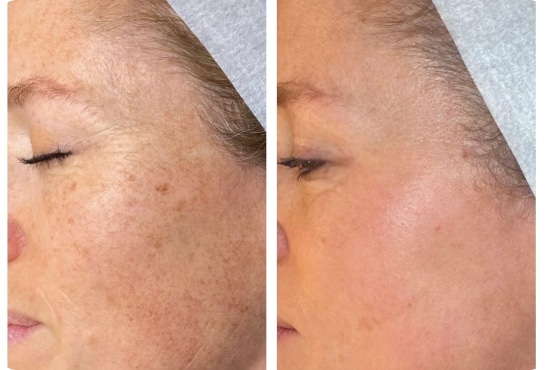
Skin Concern: Pigmentation
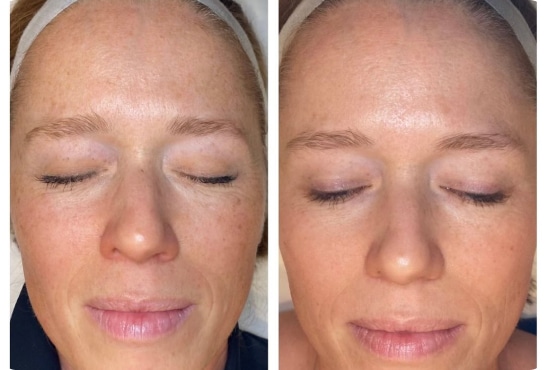
Skin Concern: Pigmentation
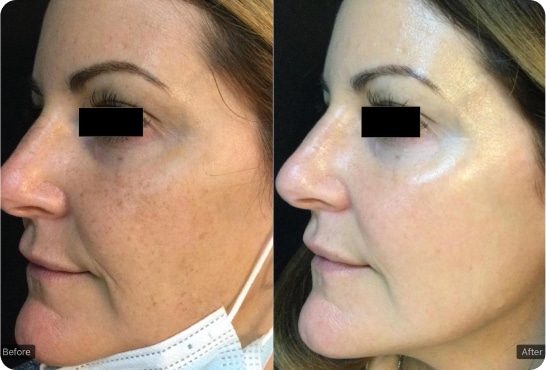
Skin Concern: Pigmentation
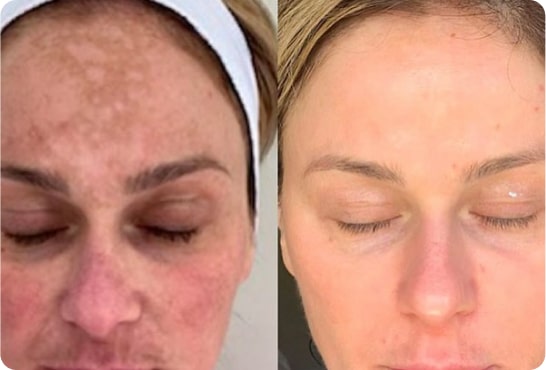
Skin Concern: Acne
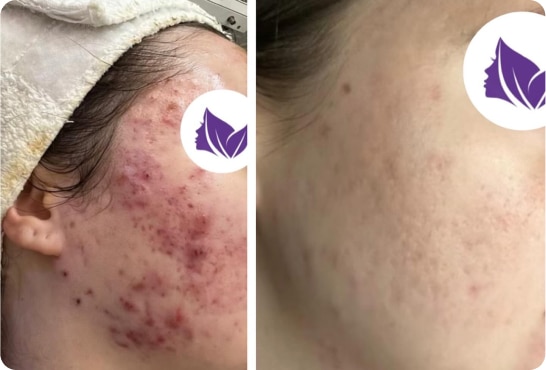
Skin Concern: Acne
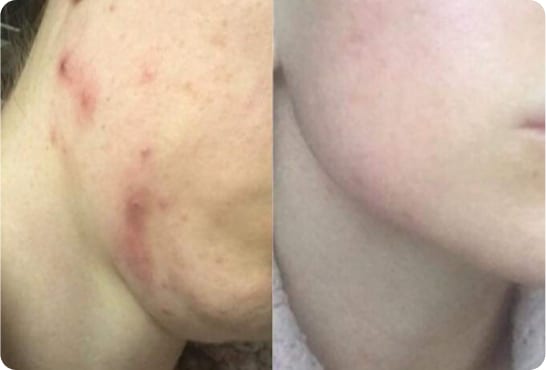
Skin Concern: Acne
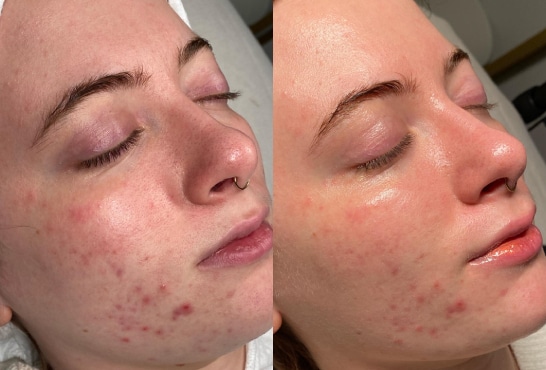
Skin Concern: Acne
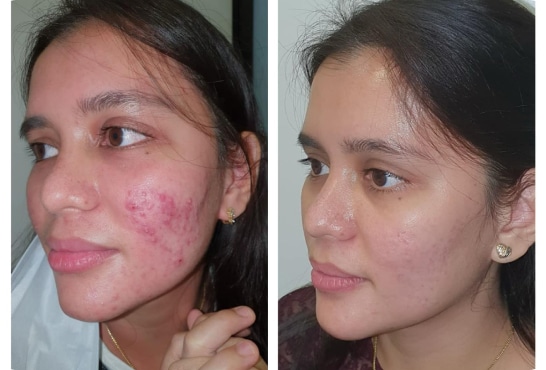
Skin Concern: Acne
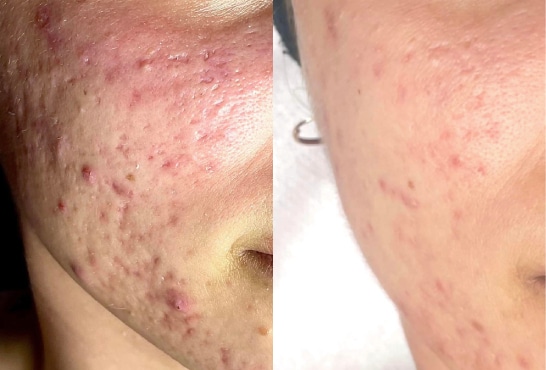
Skin Concern: Acne
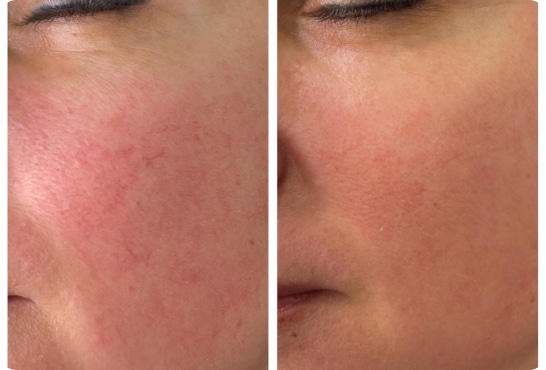
Skin Concern: Redness
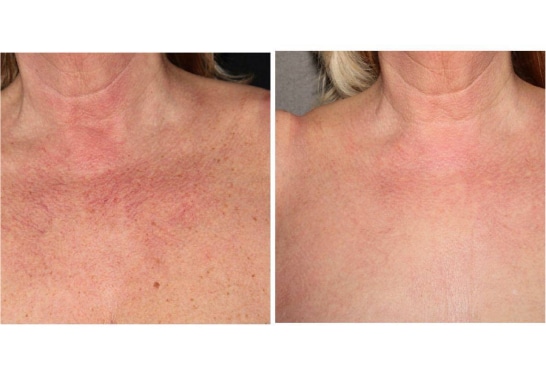
Skin Concern: Redness
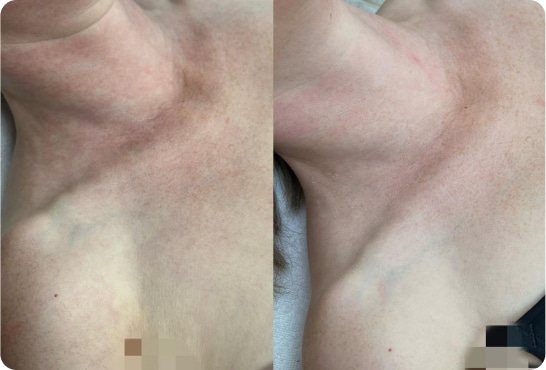
Skin Concern: Redness
Questions? We Have Answers.

If an acne breakout occurs deep in the skin, it can damages the skin and tissue underneath. When the acne clears, the body tries to repair this damaged area. During the healing process, the body produces collagen – a substance that supports the skin. If the body produces too little or too much collagen, you will see a scar. The type of scar depends on how much collagen your body makes.
Depressed acne scars (Atrophic): If the body produces too little collagen, depressions or pits form as the skin heals.
Raised acne scars: (Hypertrophic) Sometimes the body produces too much collagen while trying to heal the skin and underlying tissues.If this happens, a person will develop a raised acne scar. This type of acne scar is more common in darker skinned people such as African Americans, Hispanic and Asians. Even though we do our best to prevent acne scarring, some people do scar.
There are many treatment options, which can significantly reduce the depressed and raised acne scars. Treatments include chemical peels, microdermabrasion, laser resurfacing, and fillers.
There are 3 main types of atrophic acne scars:
- Ice pick scars – small, deep holes in the surface of your skin that look like the skin has been pierced with a sharp object.
- Rolling scars – caused by bands of scar tissue forming under the skin, giving the surface of the skin a rolling and uneven appearance.
- Boxcar scars – round or oval depressions, or craters, in the skin.
References:
- NHS: Acne
- American Academy of Dermatology Association: Acne scars
Some people are more likely to see scars when their acne clears. The risk increases when someone:
- Has inflamed (swollen, reddish and painful) acne This often includes acne cysts and nodules. This type of acne often penetrates deep into the skin, causing damage to the skin.
- Doesn’t slow or treat inflamed acne. The longer someone has inflamed acne, the greater the risk of scarring.
- Picking, squeezing, or popping acne: This increases inflammation, and thus increasing the risk of scarring.
- Has a blood relative who developed acne scars Genes play a big role.
Improper production and breakdown of collagen during the healing process can lead to the formation of various types of scars. Scars can be classified according to the cause and time of their formation and appearance. The last group of acne scars is divided into atropic, hypertropic and discolored. Atrophic scars are below the surface of the skin and have receded. On the other hand, hypertrophic scars are raised above the surface of the skin.


